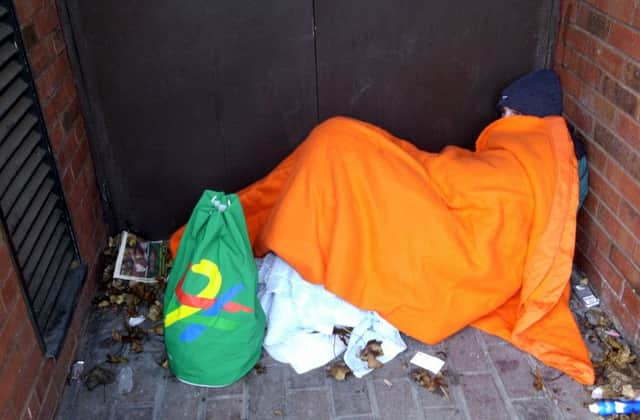Fall in number of rough sleepers


Figures released by the Department for Communities and Local Government show that in 2012, 15 people were counted as sleeping rough in autumn (October 1 to November 31) in Wigan.
This has dropped dramatically to just three in 2015 giving Wigan a ‘rough sleeping rate’ (per 1,000 households) of 0.02 compared to the rate for England of 0.16.
Advertisement
Hide AdAdvertisement
Hide AdAccording to the figures, which have been released annually since 2010, 2012 was the peak having risen from six in 2010 to 11 in 2011.
The number then dropped to 13 in 2013 and seven in 2014 before reaching last year’s figure of three.
This is despite the number of rough sleepers nationally rocketing from 1,768 in 2010 to 3,569 in 2015.
In the past year alone in England, the number of rough sleepers has risen 30 per cent from 2,744.
Advertisement
Hide AdAdvertisement
Hide AdRough sleepers are defined as people sleeping, about to bed down (sitting on/in or standing next to their bedding) or actually bedded down in the open air (such as on the streets, in tents, doorways, parks, bus shelters or encampments).
People in buildings or other places not designed for habitation such as stairwells, barns, sheds, car parks, cars, derelict boats, stations or makeshift shelters, often comprised of cardboard boxes. The definition does not include people in hostels or shelters, people in campsites or other sites used for recreational purposes or organised protest, squatters or travellers.
Wigan Council’s homelessness partnership was recently rewarded with a ‘Gold’ standard by national assessors appointed by the
Government.
Paul Connery, Strategy and Partnership Manager for homeless charity Homeless Link, said: “Everyone working on these issues at Wigan should be really proud of the work they are doing. In many areas rough sleeping numbers are increasing but Wigan’s example shows that by prioritising homeless people, investing in a range of services and working in partnership you can work towards solving some of these issues. It’s impressive.”